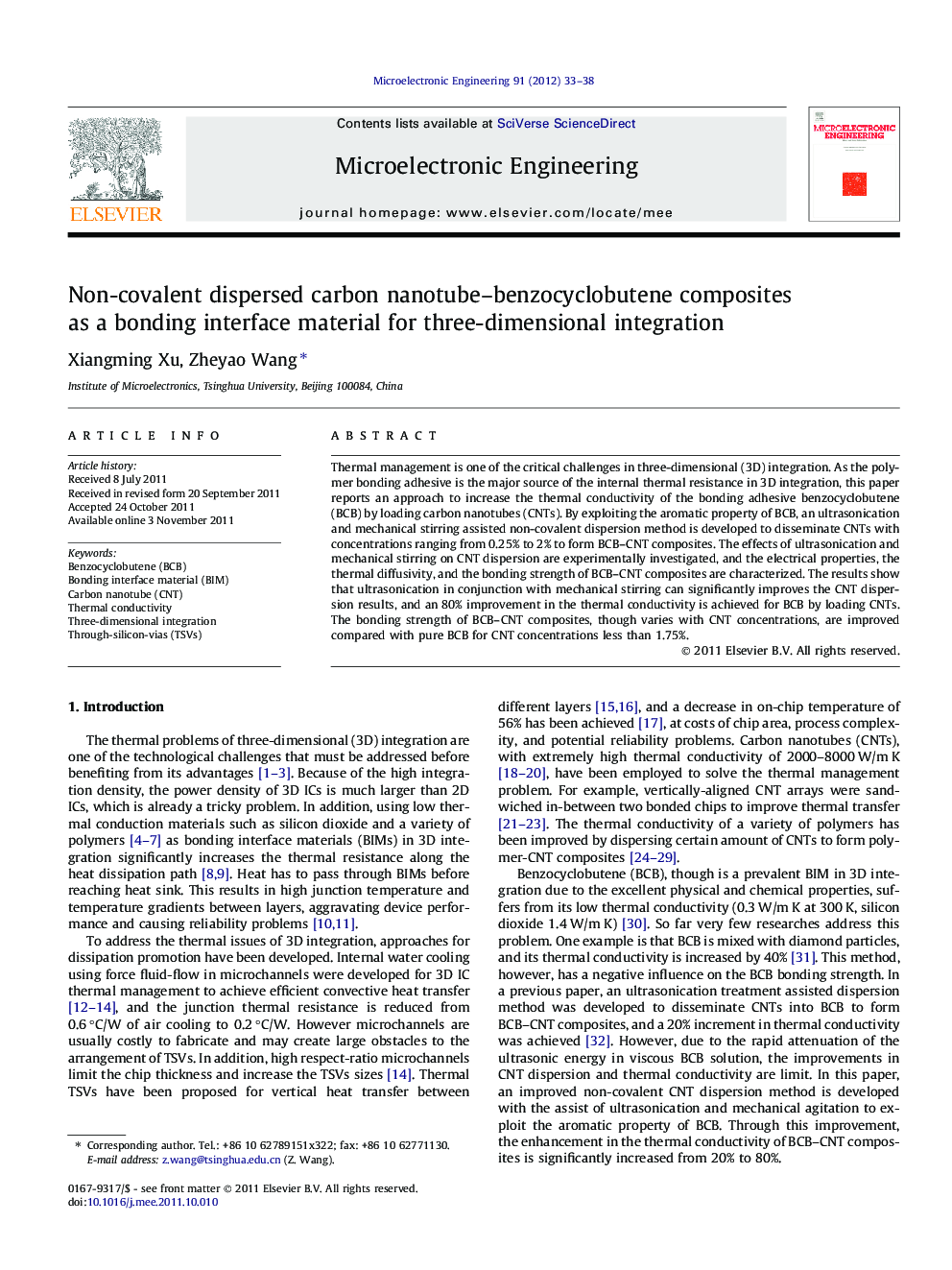| Article ID | Journal | Published Year | Pages | File Type |
|---|---|---|---|---|
| 540309 | Microelectronic Engineering | 2012 | 6 Pages |
Thermal management is one of the critical challenges in three-dimensional (3D) integration. As the polymer bonding adhesive is the major source of the internal thermal resistance in 3D integration, this paper reports an approach to increase the thermal conductivity of the bonding adhesive benzocyclobutene (BCB) by loading carbon nanotubes (CNTs). By exploiting the aromatic property of BCB, an ultrasonication and mechanical stirring assisted non-covalent dispersion method is developed to disseminate CNTs with concentrations ranging from 0.25% to 2% to form BCB–CNT composites. The effects of ultrasonication and mechanical stirring on CNT dispersion are experimentally investigated, and the electrical properties, the thermal diffusivity, and the bonding strength of BCB–CNT composites are characterized. The results show that ultrasonication in conjunction with mechanical stirring can significantly improves the CNT dispersion results, and an 80% improvement in the thermal conductivity is achieved for BCB by loading CNTs. The bonding strength of BCB–CNT composites, though varies with CNT concentrations, are improved compared with pure BCB for CNT concentrations less than 1.75%.
Graphical abstractFigure optionsDownload full-size imageDownload as PowerPoint slideHighlights► Ultrasonication with mechanical stirring greatly improves CNT dispersion in BCB. ► Stable BCB–CNT composites with different CNT concentrations are obtained. ► An 80% improvement in the thermal conductivity is achieved for BCB–CNT composites. ► The composite bonding strength is improved for CNT concentrations less than 1.75%.
